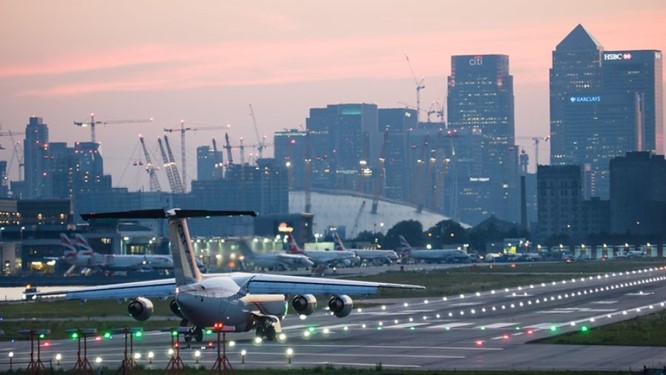
London Airport Expansion Highlights Potential Pitfalls of "Jet Zero" Strategy
The recent decision by the UK government to approve an expansion of London City Airport has sparked debate over the effectiveness of its "Jet Zero" strategy for reducing aviation emissions. The expansion will allow the airport to accommodate an additional 2.5 million passengers annually.
This approval, granted by the newly elected centre-left government, mirrors similar decisions made by the previous centre-right administration. It stands in contrast to the recommendations of the UK's Climate Change Committee and faces opposition from climate advocates and residents of East London concerned about noise and pollution.
In June of last year, the Climate Change Committee advised against any net airport expansion across the UK until a national capacity management framework is established. The committee's stance remains unchanged, according to a spokesperson.
Despite this, Labour ministers Angela Rayner and Louise Haigh defended the expansion, arguing that increasing the passenger cap from 6.5 million to 9 million would boost employment, tourism, and business productivity in London. They also claimed that the expansion aligns with the government's "Jet Zero Strategy" — a plan to decarbonize aviation — and would not hinder the UK's 2050 net zero target, as the additional emissions would be minimal.
Critics argue that this decision exposes flaws in the UK's airport planning and Jet Zero Strategy, which aims to reduce aviation emissions through cleaner fuels, carbon offsets, and CO2 removal technologies while increasing passenger numbers by about 50% between 2018 and 2050.
Other major London airports, including Heathrow, Gatwick, Luton, and Stansted, are also considering expansions or seeking approval for them.
For the London City expansion, ministers relied heavily on recommendations from planning inspectors Claire Searson and Johanna Ayres. The inspectors concluded that the emissions from the proposed expansion could be managed within the trajectory set by the Jet Zero Strategy, suggesting that current planning policies are consistent with the UK's climate obligations.
Published by the previous Conservative government in July 2022, the Jet Zero Strategy aims for a net zero aviation sector by 2050, acknowledging the challenge of this goal.
Alethia Warrington from the NGO Possible criticized the strategy, calling its passenger growth projections "incredibly dangerous." Possible is challenging the strategy in court. Greenpeace's Paul Morozzo also described the strategy as based on "false hope."
The Jet Zero Strategy does not include measures to cap flights or airport capacity, allowing for expansions under the assumption that they are compatible with the strategy's goals. Instead, the plan relies on carbon offsets for nearly half of the required emissions reductions, though many offsets have been found to be ineffective.
The strategy also seeks to achieve emissions reductions through fuel efficiency improvements, sustainable aviation fuels (SAFs), and a small fraction from zero-emission aircraft. While some airlines are adopting more fuel-efficient planes, the feasibility and sustainability of SAFs are still debated. Current SAFs, made from biomass such as crops or used cooking oil, are insufficient to meet demand and are significantly more expensive than conventional jet fuel.
SAFs also face challenges such as competition with food crops and deforestation. Recently, the UK's advertising regulator ruled that Virgin Atlantic's claim of using "100% sustainable aviation fuel" was misleading.
Andrew Symes, CEO of OXCCU, which is producing small amounts of SAF at Oxford Airport, acknowledged that SAFs based solely on biofuels are inadequate. His company is developing SAF that combines CO2 and green hydrogen, though he admitted this approach is not perfect and requires large-scale CO2 removal and renewable energy infrastructure.
Symes expects this type of SAF to be used in aircraft in limited quantities by the end of the decade, but Warrington of Possible remains skeptical. She argues that the scale of renewable energy required to produce e-fuel is impractical and that widespread zero-carbon flights are likely decades away.
Even if all measures in the high-ambition scenario of the Jet Zero Strategy succeed, aviation could still produce 19 million tonnes of CO2 equivalent annually by 2050. Addressing these residual emissions through CO2 removal is seen as highly expensive and resource-intensive, leading to skepticism about the strategy's overall effectiveness.